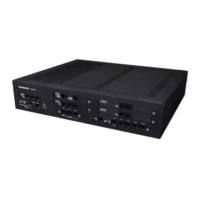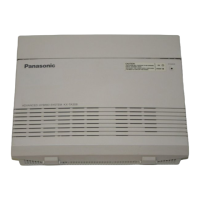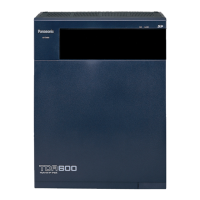[Explanation]
Extension 201 does not answer the CO line call, so the call is forwarded to the Unified Messaging system, and
answered by mailbox 201. If the outside caller leaves a message, the Unified Messaging system sends a
Message Waiting notification to the extension using Enhanced QSIG information over the private network.
When forwarding the call, PBX-2 sends any received call information (Caller ID number/name, etc.) along with
the trunk group number to use, applicable time mode, and extension number and forwarding reason of the
original destination extension to PBX-1 as Enhanced QSIG information.
PBX Code Method
PBX-1 (PBX
Code: 20)
TIE Line Network
Private network
PBX-2 (PBX
Code: 30)
Outside Caller
PBX-3
PBX-4
PBX-5
PBX-6
PBX-7
Telephone Company
Extn. 102
Fwd to Unified
Messaging
PBX-8
Extn.
101
Extn.
101
Unified Messaging
Mailbox 101
Mailbox 201
Mailbox 730101
Mailbox 730102:
"Hello. I am not at
my desk right now."
Mailbox 730102
"7-30-102"
[TIE line
access no.]
[Extn. no.]
[PBX
code]
[Explanation]
Extension 102 does not answer the CO line call, so the call is forwarded to the Unified Messaging system,
using
a mailbox number containing the TIE line access number, the PBX code of the PBX that received the
call, and the extension number that received the call.
This mailbox number is the same as if an extension connected to PBX-1 called extension 102 of PBX-2. This
mailbox number should be programmed as the mailbox number and owner extension number on the Unified
Messaging system.
Multiple Voice Mail Services
More than one PBX in a network can provide voice mail services to extensions connected to other PBXs.
Conditions
[General]
• This section explains Centralized Voice Mail assuming that the Unified Messaging system is being shared.
If you want to use the Centralized Voice Mail feature with a VPS over a stacking connection, refer to the
documentation of the PBX from which you will share the VPS.
Document Version 2016-03 Feature Manual 297
15.1.13 Private Network Features—Centralized Voice Mail

